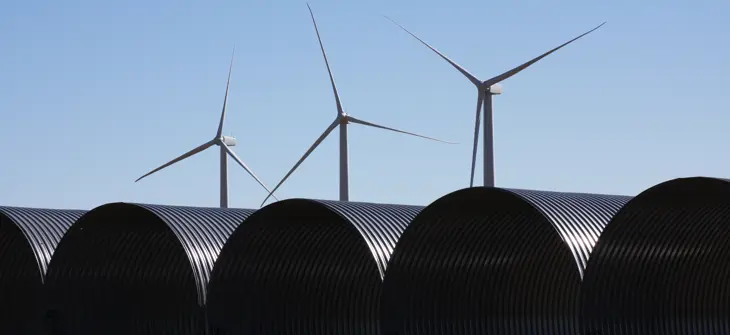
Two Standard Foundation Types
There are two standard types of foundations utilized in wind turbine design. They are gravity spread and deep foundations.
Deep foundations along with Gravity spread support the largest wind turbine generators (4.5 MW turbines currently) in operation. As the turbines are increasing in size, Gravity spreads are approaching the limits of both their capacity and economical limits. Deep foundations are positioned very well for these larger applications due to their design advantages.
A little history - Since 1994, over 7,000 deep foundations have been installed generating greater than 15 gigawatts of energy. Fun fact: 1 gigawatt of energy can power approximately 725,000 homes.
Proof of our performance, our Jamaica wind turbine project survived the 2001 Hurricane Michelle – a Category 5 hurricane which hit the 41 newly completed foundations with no catastrophic loss of turbine or foundation.
The first deep foundation type I’d like to mention is the Pier Foundation. Formally known as a P&H Pier, they are now called Grip Terra Pier Foundations. Terracon Consultants purchased the P&H patents in 2019, and later the name was officially changed.
Pier Foundation sites are dictated by soils where favorable ground conditions such as soft/hard rock, dry or wet silty and clay soils. Ideally, the soils must be able to stand vertically (with minimum sluff) within 18’ excavation areas that range from 28’ to 34’ feet deep. Having limited ground water near surface also is favorable. These holes are typically excavated or drilled depending on soil conditions.
Building in rock soil application can be accomplished but would require blasting and provide the highest factors of safety. A typical Turbine Foundation design requires a minimum factor of safety of 2 for overturn moment, Pier rock installations have a greater than 4 Factor of Safety typically and are most commonly manufactured utilizing HEL-COR® corrugated steel pipe.
Advantages of Pier Foundations
As tower heights increase and the MW machines get larger, the gravity type spreads are approaching their limitations from a performance and construction cost. Deep foundations are positioned to capitalize on the advantages they possess to address the massive overturn and rotational shiftiness required.
Pier Foundations are specifically used in California and excel in seismic and floodwater areas particularly near Palm Springs. If you’ve ever driven thru Palm Springs, CA, there are a few thousand pier foundations in operation.
Extending fatigue life is another key characteristic due to post tensioning and with the ability to re-certify foundations, repowering has become a hot topic as of late. Pier Foundations on turbines 2.5 MW and larger are the most cost effective for a construction and material case. In several cases, I have been seeing a cost savings of 40%.
Now let’s take a look at the second type of deep foundation, the Grip Terra Anchor Foundation.
Anchor Foundations have the flexibility to be used in the largest range of soil/rock condition: from soft to hard rock, dry and wet silty and clay soils. Contech is currently involved in building a 41-foundation project in the bogs of Mississippi. An Anchor Foundation solution was the only option without large soil mitigation alternatives.
MULTI-PLATE® steel structural plate is predominantly used in anchor foundation applications as the typical outer rings range from 30’ to 36’ while the inner rings range from 10’ to 14’.
Advantages of Anchor Foundations
Any turbine size can be accommodated on the anchor foundation. Anchor Foundations offer the widest range of soil conditions available of any type of foundation type while providing the lowest site disturbance during construction. Typical savings for Anchor Foundations range from 25% to 40%.
